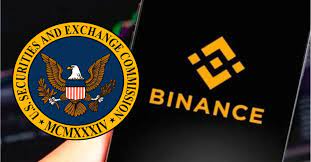Delayed resumption, the teacher was “forced” to open an online business and see what the blockchain can do?
That is the same as the previous "blockchain +" introduction. Let's first take a look at what problems exist in the traditional education industry? Then look at the blockchain as a new application mode of computer technology such as distributed data storage, point-to-point transmission, consensus mechanism, encryption algorithms, etc. How can we solve the problems in the traditional education industry?
Problem 1: Education resources are unevenly distributed and education is highly differentiated
China has a large population and a vast territory, and its development levels vary from region to region. In developed and underdeveloped regions, economic and social awareness is in a leading position, and education awareness and investment are greater than in less developed regions, resulting in an uneven distribution of educational resources. At the same time, with people's emphasis on education, more and more extra-curricular tutoring classes and specialty classes are responding, and the cost of registering for classes is tens of thousands, which is not a small burden on ordinary families.

Because of economic problems in less-developed regions, on-the-job training of teachers is difficult, the treatment is low, forced by economic pressure and the pursuit of better economic conditions, talented and outstanding teachers often choose to serve in key schools in developed regions, which makes Between urban and rural areas, the teacher gap between key colleges and ordinary colleges has widened, and a situation of "the stronger is stronger, the weaker is always weak" has formed. The uneven development of the teaching staff has also led to a very large degree of differentiation in the education of students. As the gap between the rich and the poor widens day by day, it is also a phrase that people often call "win on the starting line at birth".
Solution: The peer-to-peer transmission mechanism realizes the sharing of educational resources and promotes educational equity.
- Viewpoint | Tokai University Guo Kaiping: Blockchain realizes free and trace flow of funds
- France proposes EU to make blockchain a priority development, urging it to remove legal obstacles
- Cryptocurrency's largest institutional asset manager Grayscale: ETH and ETC are second only to Bitcoin
The point-to-point transmission mechanism of the blockchain can eliminate intermediate links, optimize educational business processes, and achieve efficient and low-cost education resource trading and sharing. The education gap caused by the economic gap is in the final analysis because of the uneven distribution of educational resources, so it is better to build a blockchain education system with peer-to-peer transmission, which will link all educational resources to the chain, and all students in need can pass through this system. Paying a reasonable fee for resource sharing and learning can not only effectively improve the resource sharing rate, but also effectively solve the problem of resource islands. At the same time, because of the wide range of students and the large number of students, the income of resource providers and creators is also very high. helpful.
In this way, it can ensure that excellent teachers get fair economic income, and the open sharing of educational resources, and also enable excellent teachers to make a reasonable and balanced distribution through the blockchain system. Students distributed throughout the country can Through rich and high-quality on-chain education resources, learn at different stages and levels. It is conducive to sharing educational resources, promoting educational equity, and actively responding to China's strategy to strengthen the country by talents, and make positive contributions to China's talent reserves. Finally, on-chain learning can effectively reduce the cost of human and material resources, which is also very beneficial for reducing learning costs and promoting inclusive education.
Question 2: The issue of fake academic papers, impostors of attending school, etc. has been repeatedly banned
Some time ago, Weibo searched many years after the woman found out that she had been impostored to go to school. Later, she appeared on the Weibo search list many times because of academic papers or fraud or plagiarism. These incidents reflect the serious and indisputable facts of academia and education. After many years of hard work and hard work, I was replaced by a student. My students and teachers worked hard to find information to do research and write thesis. Finally, they were signed by a high-weight professor and the principal, and there was a fake doctor Zhai Tianlin incident. Students and scholars are sad and helpless.

Impersonation and academic counterfeiting problems stem from the monopoly of traditional education services by schools or government agencies, which leads to opaque information and a completely centralized management model; on the other hand, it comes from people's weak awareness of academic intellectual property protection. Let interested people have opportunities.
Solution: The encryption algorithm guarantees that information is not leaked, and the traceability feature protects intellectual achievements.
Blockchain can be used to develop a decentralized education system, break the traditional monopoly situation, and effectively reduce the incidence of malpractice caused by human intervention. At the same time, for the student's data and archive records, the public key and private key can be encrypted by using an encryption algorithm. The private key is only owned by the student, and it can be kept and checked by the data, which can effectively reduce the problems of privacy leakage and information tampering.
For intellectual achievements such as academic papers of students being plagiarized, plagiarized, and important information such as student grades, personal files, academic credentials, etc., it can be effectively protected by the traceability of the blockchain. Students can upload their own personal data, publish their own thesis and academic results display in the affiliated education blockchain system. The traceability of the blockchain can automatically track, query, and obtain, protecting each source from the source. The intellectual achievements of a student effectively prevent the plagiarism of knowledge achievements, while protecting their data from tampering and theft. This is of great significance for creating a good academic atmosphere, encouraging knowledge innovation, and ensuring fair education.
Question 3: The exam-oriented education system is solidified, and students' autonomous learning ability and innovation ability are weak
Active learning and passive receiving, which is more conducive to active learning and storage of knowledge? At present, there is a common phenomenon in China's education industry, that is, primary school, junior high school, and high school go to school very tightly, and teachers "inculcate" the knowledge that focuses on examinations. This exam-oriented education has greatly obliterated students 'autonomous learning ability and innovative ability, and restricted the formation of students' divergent thinking and creative thinking. By the time university management was relatively loose, learning became secondary. Students' weak learning autonomy leads to lack of professional knowledge, and poor divergent thinking leads to poor creativity. This is not conducive to the employment of college students, nor is it conducive to the cultivation and export of innovative talents.

Solution: Incentive consensus mechanism to effectively improve students' autonomous participation and enthusiasm for learning.
The on-chain education we mentioned earlier can use the blockchain incentive mechanism to promote students' active knowledge acquisition and learning. For example, in the blockchain education system, the circulation mechanism of virtual tokens is added. Students can obtain corresponding amounts of virtual coins by asking questions in this system, answering other people's questions, and publishing their own thesis, intellectual achievements, etc., and these currencies can be used to purchase learning materials and training services in the system. use. This kind of motivation can effectively stimulate students' desire for learning and the enthusiasm of active learning.
At the same time, university education is relatively loose and free, and we can learn from the education model of Woolf University, a blockchain university founded by a group of scholars from Oxford University in April 2018. Unlike other traditional universities, Woolf University will not have a physical campus. Instead, it will be an application platform that allows scholars to promote their professional knowledge to future students. Students can choose majors at blockchain universities according to their own needs and interests. course. The management of the school will all rely on the blockchain platform. Blockchain technology will be used to supervise contracts, pay tuition fees, and record students' academic achievements and credits. Once students have completed their credits, they will receive a degree certificate.
It is said that interest is the best teacher, not to adjust the major according to the score, but to choose the major according to the students' own interests and needs. This can effectively reduce the emergence of talents due to system problems, and also maximize their individual strengths. It is very helpful for creating differentiated and creative talents. At the same time, on-chain universities can give college students more and broader autonomous choices and time allocation.
Choose credits for courses on the chain according to interests, saving time for school lectures. On the one hand, academic schools can further explore and mine theoretical knowledge according to their preferences, and share and record on the chain. Carry out company internships, combining theory with practice, so as to give more students better study suggestions and work suggestions, and to give companies more and better suggestions feedback and innovative ideas. This has played a significant role in cultivating different types of professional innovative talents, and it can greatly achieve the best use of people. At the same time, it is also of great significance for rejuvenating the innovation of a country.
"Development is the first priority, talent is the first resource, and innovation is the first motive force." It can be seen that talent is the key to the country's economic and social prosperity. The trend of blockchain technology, which is regarded as the blade of reform, has empowered various industries and revolutionized the trend. It has become an indisputable fact. In the near future, the entire education industry will begin to explore ecological optimization again and again under the blessing of the blockchain.
We will continue to update Blocking; if you have any questions or suggestions, please contact us!
Was this article helpful?
93 out of 132 found this helpful
Related articles
- Forbes Announces "Top 50 Fintech", 6 Blockchain Companies List
- Samsung's new flagship phone Galaxy S20 series released, continues to support cryptocurrencies
- In the past month, the total ecological market value of Staking has nearly doubled. Has the turning point really come?
- After FCoin's "incident", key figures from the team responded!
- Canaan technology soared 82%, and the concepts of U.S., Hong Kong and A-share blockchains rose collectively
- Can Alipay use the blockchain to send your love to those who need it?
- Scanning the data on the Bitcoin chain in January (below): Binance VS Huobi Double Giants






